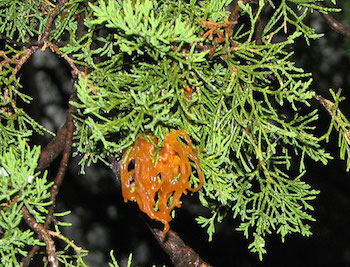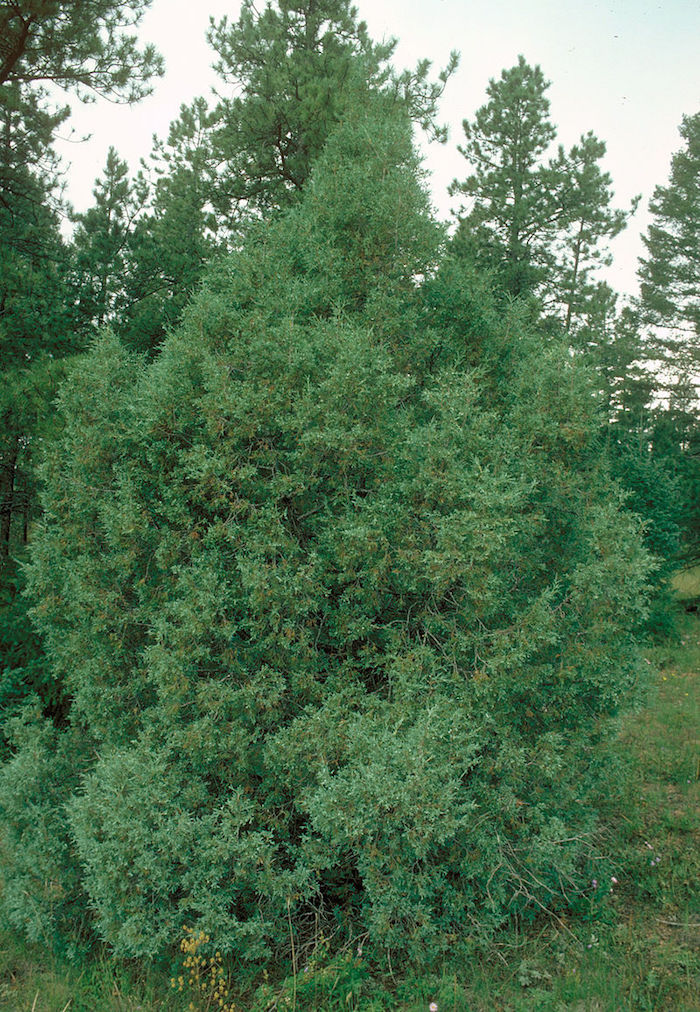
Description:
Rocky Mountain juniper is a valuable ornamental tree not native to Minnesota. Leaves are green or greenish-blue overlapping scales. The leaves are very similar to those of eastern red cedar (J. virginiana) except Rocky Mountain junipers have blunt needle tips and overlapping scales. The species is dioecious, meaning trees either have male or female cones—male cones are yellow-brown and papery, and grow alone at the tips of branchlets, while female cones are dark blue or purple, waxy, and berry-like. The bark is dark brown to grey, and shreds with age.
Rocky Mountain Juniper has many ethnobotanical uses. The Blackfoot made a tea from the roots as a general tonic, the Cheyenne made a leaf tea to expedite childbirth, and the Crow boiled leaves and roots to stop hemorrhaging. Many tribes also use Rocky Mountain juniper for incense and purification rites. It is also a very ornamental species, prized for its compact size and aromatic foliage. The wood is very durable and is used for fence posts and paneling.
Issues:
Rocky Mountain juniper is the alternate host of Cedar-Apple rust (Gymnosporangium juniper-virginianae), an important pathogen of both junipers and apple trees. Junipers can develop reddish-brown galls, which can be cone-like or gelatinous and gooey depending on the season. Junipers are also generally susceptible to leaf blights.
Other resources:





